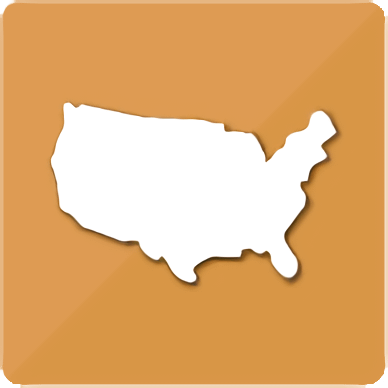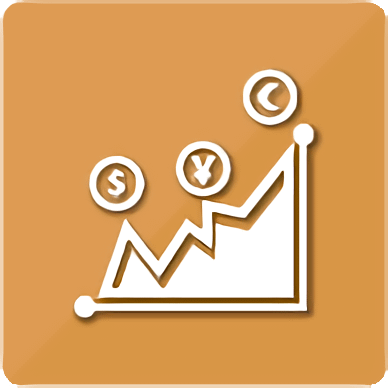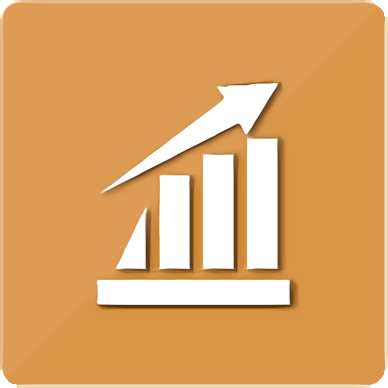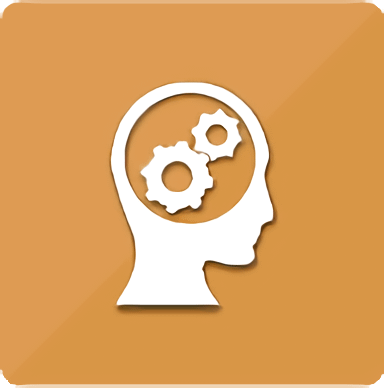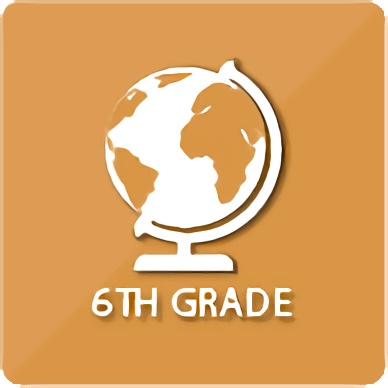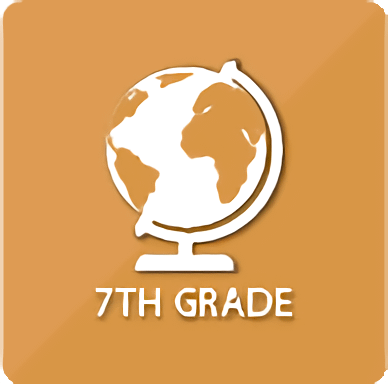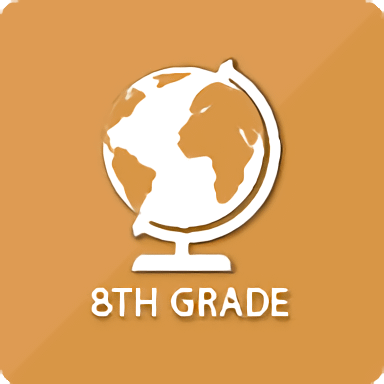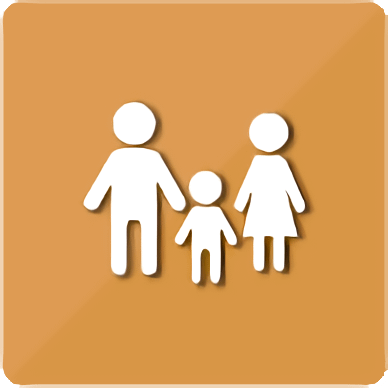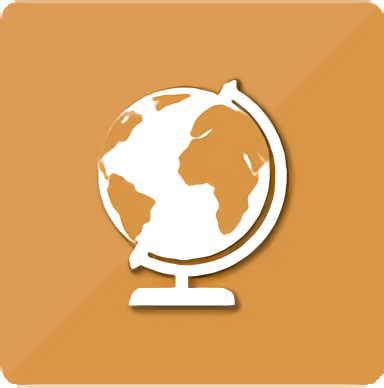All Courses
American History [Competency Based] (2nd semester)
$250.00American History [Credit Recovery]
$250.00American History [Honors] (1st semester)
$250.00American History [Honors] (2nd semester)
$250.00Economics [Competency Based] (1st semester)
$250.00Economics [Competency Based] (2nd semester)
$250.00Macroeconomics [Competency Based]
$250.00Microeconomics [Competency Based] (1st semester)
$250.00Psychology [Competency Based]
$250.00Social Studies 6th Grade (1st semester)
$250.00Social Studies 6th Grade (2nd semester)
$250.00Social Studies 6th Grade [Credit Recovery]
$250.00Social Studies 7th Grade (1st semester)
$250.00Social Studies 7th Grade (2nd semester)
$250.00Social Studies 7th Grade [Credit Recovery]
$250.00Social Studies 8th Grade (1st semester)
$250.00Social Studies 8th Grade (2nd semester)
$250.00Social Studies 8th Grade [Credit Recovery]
$250.00Social Studies 8th Grade [Credit Recovery] (Copy)
$250.00Sociology [Competency Based]
$250.00US Government [Competency Based] (1st semester)
$250.00Course Description
US Government offers students a comprehensive examination of this country’s government. Students explore the evolution of American democracy, from its birth in the eighteenth century to the expansive role of federal, state, and local governments today. The course covers topics such as changes to the Constitution, the function of the Supreme Court, the structure of Congress, and the importance of the media. The course explores the relationship between the political parties and lobbyists, and the process of monitoring and funding federal elections. Students investigate the roles of state and local governments and their impact on citizens’ daily lives. At the end of this course, students have a knowledge of and appreciation for the workings and history of the US government and understand its impact on American society.Course Breakdown
- Roles and powers of the president
- Roles and powers of the Supreme Court
- Federal government and religion
- Congressional committee system
- Interest groups
- Role of political parties
Course Goals
- Describe the structure and function of the executive branch.
- Explain the role that lobbyists and interest groups play in the legislative process.
- Explain the role of political parties in American politics.
- Describe the structure and function of the judicial branch.
US Government [Competency Based] (2nd semester)
$250.00Course Description
US Government offers students a comprehensive examination of this country’s government. Students explore the evolution of American democracy, from its birth in the eighteenth century to the expansive role of federal, state, and local governments today. The course covers topics such as changes to the Constitution, the function of the Supreme Court, the structure of Congress, and the importance of the media. The course explores the relationship between the political parties and lobbyists, and the process of monitoring and funding federal elections. Students investigate the roles of state and local governments and their impact on citizens’ daily lives. At the end of this course, students have a knowledge of and appreciation for the workings and history of the US government and understand its impact on American society.Course Breakdown
- Campaign process
- Types of elections
- Role of the media in government
- The Bill of Rights US court system
- Taxes and national debt
- State governments and their authority
- Local governments and their authority
Course Goals
- Describe the election process.
- Assess the role of the media in American politics.
- Explain how the Bill of Rights protects the important freedoms of individuals. Describe the role of the court system at the local and national levels.
- Contrast common law, statutory law, criminal law, and administrative law.
- Explain the relationship between the American economic system and the federal budget.
- Describe how state and local governments develop their budgets.
US Government [Credit Recovery]
$250.00Course Description
US Government offers students a comprehensive examination of this country’s government. Students explore the evolution of American democracy, from its birth in the eighteenth century to the expansive role of federal, state, and local governments today. The course covers topics such as changes to the Constitution, the function of the Supreme Court, the structure of Congress, and the importance of the media. The course explores the relationship between the political parties and lobbyists, and the process of monitoring and funding federal elections. Students investigate the roles of state and local governments and their impact on citizens’ daily lives. At the end of this course, students have a knowledge of and appreciation for the workings and history of the US government and understand its impact on American society.Course Breakdown
- Roles and powers of the president
- Roles and powers of the Supreme Court
- Federal government and religion
- Congressional committee system
- Interest groups
- Elections
Course Goals
- Describe the structure and function of the executive branch.
- Explain the role that lobbyists and interest groups play in the legislative process.
- Explain the role of political parties in American politics.
- Describe the structure and function of the judicial branch.
- Describe the election process.
World Geography [Competency Based] (1st semester)
$250.00Course Description
World Geography explores the world’s geographical divisions and the differences between Earth and the other planets in the solar system. In addition to Earth’s geographical features, the course explores how the cultural divides between countries impacts international relations. Through the study of geography, students analyze energy usage and explore ways to make the most of the planet without abusing its resources. The study of world geography through historical, cultural, physical, and economic lenses offers students a different perspective and understanding of the world.Course Breakdown
- Time zones
- Maps
- Earth in the solar system
- Climates
- Population
- Religion and language
- North America Central America
- South America
- Europe
- Greece
- Russia
Course Goals
- Analyze geological properties of Earth.
- Examine the interactions of Earth’s systems and cycles.
- Explain the causes and effects of environmental change, including resource use.
- Explore the human and physical geographical features of North America. Explore the human and physical geographical features of Central America and South America.
- Analyze the human and physical geographical features of Europe.
- Examine the human and physical geographical features of Russia.
World Geography [Competency Based] (2nd semester)
$250.00Course Description
World Geography explores the world’s geographical divisions and the differences between Earth and the other planets in the solar system. In addition to Earth’s geographical features, the course explores how the cultural divides between countries impacts international relations. Through the study of geography, students analyze energy usage and explore ways to make the most of the planet without abusing its resources. The study of world geography through historical, cultural, physical, and economic lenses offers students a different perspective and understanding of the world.Course Breakdown
- Central and Southwest Asia
- Eastern Europe
- Africa
- South Africa
- Australia
- Pacific Islands India
- China
- Japan
- Southeast Asia
Course Goals
- Analyze the human and physical geographical features of Central Asia.
- Explore the human and physical geographical features of Africa.
- Examine the human and physical geographical features of Oceania. Investigate the human and physical geographical features of India and South Asia.
- Analyze the human and physical geographical features of China.
- Evaluate the human and physical geographical features of Southeast Asia.
World Geography [Credit Recovery]
$250.00Course Description
World Geography explores the world’s geographical divisions and the differences between Earth and the other planets in the solar system. In addition to Earth’s geographical features, the course explores how the cultural divides between countries impacts international relations. Through the study of geography, students analyze energy usage and explore ways to make the most of the planet without abusing its resources. The study of world geography through historical, cultural, physical, and economic lenses offers students a different perspective and understanding of the world.Course Breakdown
- Uses of geography
- Earth's position in the solar system
- Wind and sunlight
- Precipitation
- Climates
- North America
- Central America
- South America
- Geography of Europe
- Geography of Eastern Europe and the Mediterranean
- Geography of Southwest Asia
- Geography of Central Asia
- Geography of China
Course Goals
- Analyze geological properties of Earth.
- Explore the human and physical geographical features of North America.
- Analyze the human and physical geographical features of Central America and South America. Analyze the human and physical geographical features of Europe.
- Explore the human and physical geographical features of China.
- Examine the human and physical geographical features of Asia.
World History [Competency Based] (1st semester)
$250.00Course Description
World History explores the changes created by the events and people of the past, and explains how these changes impacted modern times. The material is organized sequentially, exploring history from 1400 CE to the present day. Starting with the Renaissance and the Reformation, the course will highlight the cultural, economic, political, and social impact of innovation and intellectual thought. Further changes will be uncovered with the French Revolution, the Industrial Revolution, and the rise of imperialism and nationalism. The closing topics emphasize global conflicts and diplomacy, as seen in World War I, World War II, and the Cold War. Upon completion of the course, students have an appreciation for the patterns of historical change and their impact on modern society.Course Breakdown
- Influence of the Italian Renaissance
- Factors leading up to the Protestant Reformation
- Rise and fall of the Spanish empire
- Importance of the monarchies in England, France, and Russia
- Reasons for the Age of Exploration Central America
- South America
- Europe
- Greece
- Russia
Course Goals
- Investigate the emergence of the Renaissance and examine its impact on the political, economic, and social landscapes of Europe.
- Analyze religious reforms associated with Luther, Calvin, Zwingli, Henry VIII, and John of Leiden and the effects of the Reformation on Europe.
- Evaluate major achievements in literature, music, painting, sculpture, and architecture in sixteenth-century Europe.
- Assess the political atmosphere of post-Reformation Europe and analyze the conflicts that arose during this period. Explore the human and physical geographical features of Central America and South America.
- Analyze the human and physical geographical features of Europe.
- Examine the human and physical geographical features of Russia.
World History [Competency Based] (2nd semester)
$250.00Course Description
World History explores the changes created by the events and people of the past and explains how these changes impacted modern times. The material is organized sequentially, exploring history from 1400 CE to the present day. Starting with the Renaissance and the Reformation, the course will highlight the cultural, economic, political, and social impact of innovation and intellectual thought. Further changes will be uncovered with the French Revolution, the Industrial Revolution, and the rise of imperialism and nationalism. The closing topics emphasize global conflicts and diplomacy, as seen in World War I, World War II, and the Cold War. Upon completion of the course, students have an appreciation for the patterns of historical change and their impact on modern society.Course Breakdown
- Causes of World War I
- Key military events of World War I
- Influence of communism and the Bolshevik Revolution
- Recovery of Europe after World War I
- Popular culture of the 1920s
- The Great Depression
- Hitler and Stalin
- Factors leading up to World War II
- Key military events of World War II
- Conclusion of World War II Recovery after World War II
- Characteristics of the Cold War
- Decline of imperialism in Africa
- The spread of nationalism in India and the Middle East
- Japan's economic success
- Nationalism in Latin America
- Relations between Latin America and the United States
Course Goals
- Analyze how militarism, imperialism, and nationalism caused World War I.
- Explain how the conclusion of World War I set the stage for worldwide depression, the rise of totalitarianism, and the outbreak of World War II.
- Identify how key military events led to technological advancements and the conclusion of World War II. Compare the different ideologies of the United States and the Soviet Union following World War II.
- Explain how postwar global politics led to the rise of nationalist movements in Africa and Southeast Asia.
- Identify and explain the historical relationship between the United States and Latin American countries.
World History [Credit Recovery]
$250.00Course Description
World History explores the changes created by the events and people of the past, and explains how these changes impacted modern times. The material is organized sequentially, exploring history from 1400 CE to the present day. Starting with the Renaissance and the Reformation, the course will highlight the cultural, economic, political, and social impact of innovation and intellectual thought. Further changes will be uncovered with the French Revolution, the Industrial Revolution, and the rise of imperialism and nationalism. The closing topics emphasize global conflicts and diplomacy, as seen in World War I, World War II, and the Cold War. Upon completion of the course, students have an appreciation for the patterns of historical change and their impact on modern society.Course Breakdown
- Rise of the European monarchs
- Advantages and disadvantages of colonial expansion
- Factors leading to the French Revolution
- Movement toward economic, political, and social modernization
- Intellectual developments of the Enlightenment Political and social reforms of the nineteenth century
- Role of manifest destiny in the United States
- Characteristics of nationalism in Europe
- Factors leading up to World War I and World War II
- Key military events of World War II
- Conclusion of World War II
Course Goals
- Explain the factors that led to the Protestant Reformation and how it affected the government and society.
- Analyze the causes and effects of the French Revolution and how the revolution led to the Napoleonic era.
- Identify the major events and ideas that gave rise to the changes in scientific thought, philosophies, and the Enlightenment. Compare and contrast the political and social reforms of the nineteenth century and the role they had in nationalism.
- Analyze the major events of militarism that caused political and national strife, igniting both world wars.
- Explain the influence of new ideologies, such as communism, on Europe following World War I, and examine the causes of the Bolshevik Revolution.
Economics [Project Based] (1st semester)
$250.00Course Description
Economics is a comprehensive survey of the ways in which human decisions impact the world every day. Microeconomic concepts including supply and demand, business transactions, the fundamentals of work, and others offer students a glimpse into the effect of personal economic decisions upon the world. Macroeconomic concepts such as the fiscal policy of governments, trade, natural resource use, and other big picture topics offer a more broad view of the world’s economic systems. In its entirety, this course illuminates the ways in which people from around the world are connected to one another and their natural surroundings every day.Course Breakdown
- Overview of key economic concepts
- The laws of supply and demand
- Market equilibrium and disequilibrium
- Economic decision making
- Labor and wages Economic systems
- Types of business
- The role of the entrepreneur
- Market failures
- Government intervention in the economy
- Investment strategies
Course Goals
- Explain that economics is about the allocation of scarce resources, that scarcity forces choice, that tradeoffs exist, and that every choice has an opportunity cost.
- Analyze how demand and supply for a good in a competitive market are determined and explain how demand and supply together determine equilibrium price.
- Analyze the roles and decisions of producers and consumers in a market.
- Formulate a Return on Investment Portfolio related to the cost of postsecondary education and training. Assess the role of prices in allocating scarce resources in market economies and explain the consequences of price controls.
- Explain how prices and outputs are determined in markets characterized by just one seller (monopolies), a few sellers (oligopolies), or many sellers of unique but similar products (monopolistic competition).
- Analyze the role of market failure in government decisions.
- Design a comprehensive investment strategy in order to meet personal short-term, mid-term, and long-term goals.
Economics [Project Based] (2nd semester)
$250.00Course Description
Economics is a comprehensive survey of the ways in which human decisions impact the world every day. Microeconomic concepts including supply and demand, business transactions, the fundamentals of work, and others offer students a glimpse into the effect of personal economic decisions upon the world. Macroeconomic concepts such as the fiscal policy of governments, trade, natural resource use, and other big picture topics offer a more broad view of the world’s economic systems. In its entirety, this course illuminates the ways in which people from around the world are connected to one another and their natural surroundings every day.Course Breakdown
- Uses, characteristics, and value of money
- Macroeconomic theory
- American fiscal policy
- The business cycle
- Gross domestic product (GDP)
- Budgets and national debt
- Taxes and government spending The history of banking in the United States
- Types and roles of financial institutions
- Assets
- The Federal Reserve System
- Inflation and deflation
- Imports and exports
- Global trade and international trade organizations
- National economic development
Course Goals
- Analyze how money, in its various forms and uses, impacts the economy.
- Explain how fiscal and monetary policies are used to determine economic goals and impact the economy.
- Analyze the roles income distribution, production, and taxes play in the economy.
- Create a tax plan after gaining an understanding of how and why governments use taxes. Explain how banking systems evolved over time and led to the creation of the Federal
- Reserve System.
- Analyze the role of the Federal Reserve System in impacting the economy through monetary policy and other economic tools.
- Analyze the global economic development of nations and the various roles of the US economy around the world.
- Design a currency based on principles of value, taking into account the recent democratization of currency.
US Government [Project Based] (1st semester)
$250.00Course Description
US Government offers students a comprehensive examination of this country’s government. Students explore the evolution of American democracy, from its birth in the eighteenth century to the expansive role of federal, state, and local governments today. The course covers topics such as changes to the Constitution, the function of the Supreme Court, the structure of Congress, and the importance of the media. The course explores the relationship between the political parties and lobbyists, and the process of monitoring and funding federal elections. Students investigate the roles of state and local governments and their impact on citizens’ daily lives. At the end of this course, students have a knowledge of and appreciation for the workings and history of the US government and understand its impact on American society.Course Breakdown
- Government and its importance
- Origins of American government
- Independent study project
- Key governing documents
- Federalism
- Members, responsibilities, and powers of Congress Roles and powers of the president
- Roles and powers of the Supreme Court
- Purpose and influence of interest groups
- Role of political parties
Course Goals
- Identify the role of government and describe its necessity in society.
- Examine the history of the creation of the United States government.
- Apply understanding of responsible citizenship through the creation of an Action Project. Identify governmental systems in the United States and the role of each.
- Examine the concept of checks and balances.
- Apply understanding of responsible citizenship through the creation of an Action Project.
US Government [Project Based] (2nd semester)
$250.00Course Description
US Government offers students a comprehensive examination of this country’s government. Students explore the evolution of American democracy, from its birth in the eighteenth century to the expansive role of federal, state, and local governments today. The course covers topics such as changes to the Constitution, the function of the Supreme Court, the structure of Congress, and the importance of the media. The course explores the relationship between the political parties and lobbyists, and the process of monitoring and funding federal elections. Students investigate the roles of state and local governments and their impact on citizens’ daily lives. At the end of this course, students have a knowledge of and appreciation for the workings and history of the US government and understand its impact on American society.
Course Breakdown
- Types of elections
- Campaign process
- Role of the media in government
- Unity Poster Project
- The Bill of Rights Court Ruling Project
- United States court system
- Taxes and national debt
- State governments and their authority
- Local governments and their authority
Course Goals
- Describe the election process.
- Assess the role of the media in American politics.
- Explain how the Bill of Rights protects the important freedoms of individuals.
- Create a poster to persuade an audience to take action to resolve a local, state, or national issue. Describe the role of the court system at the local and national levels.
- Contrast common law, statutory law, criminal law, and administrative law.
- Explain the relationship between the American economic system and the federal budget.
- Describe how state and local governments develop their budgets.
- Analyze a Supreme Court ruling and present an evaluation of the ruling's adherence to constitutional principles.
World History [Project Based] (1st semester)
$250.00Course Description
World History explores the changes created by the events and people of the past, and explains how these changes impacted modern times. The material is organized sequentially, exploring history from 1400 CE to the present day. Starting with the Renaissance and the Reformation, the course will highlight the cultural, economic, political, and social impact of innovation and intellectual thought. Further changes will be uncovered with the French Revolution, the Industrial Revolution, and the rise of imperialism and nationalism. The closing topics emphasize global conflicts and diplomacy, as seen in World War I, World War II, and the Cold War. Upon completion of the course, students have an appreciation for the patterns of historical change and their impact on modern society.Course Breakdown
- Influence of the Italian Renaissance
- Factors leading up to the Protestant Reformation
- Rise and fall of the Spanish Empire
- Importance of the monarchies in England, France, and Russia
- Reasons for the Age of Exploration Causes of the French Revolution
- Napoleon's reign and influence within Europe
- Changes in scientific thought in the 1600s
- The Enlightenment
- The Industrial Revolution
- Political and social reforms of the 1800s
- Rise of nationalism in Europe
Course Goals
- Analyze the influence of the Italian Renaissance and its relationship with culture, religion, and art.
- Evaluate the factors that led to the Protestant Reformation and describe religious reforms in Europe.
- Analyze the development and destruction of the Spanish empire.
- Compare and contrast the monarchies of England, France, and Russia during the Age of Exploration. Explore the causes and effects of the
- French Revolution.
- Examine the Napoleonic Wars and the reconstruction of Europe.
- Consider the genesis of scientific thought and how it affected scientific discoveries.
- Recognize the foundation of the Industrial Revolution and its impact on modernity.
- Compare and contrast the transformation of political and social ideologies of the 1800s.
World History [Project Based] (2nd semester)
$250.00Course Description
World History explores the changes created by the events and people of the past, and explains how these changes impacted modern times. The material is organized sequentially, exploring history from 1400 CE to the present day. Starting with the Renaissance and the Reformation, the course will highlight the cultural, economic, political, and social impact of innovation and intellectual thought. Further changes will be uncovered with the French Revolution, the Industrial Revolution, and the rise of imperialism and nationalism. The closing topics emphasize global conflicts and diplomacy, as seen in World War I, World War II, and the Cold War. Upon completion of the course, students have an appreciation for the patterns of historical change and their impact on modern society.
Course Breakdown
- Causes of World War I
- Key military events of World War I
- Influence of communism and the Bolshevik Revolution
- Recovery of Europe after World War I
- Popular culture of the 1920s
- The Great Depression
- Hitler and Stalin
- Factors leading up to World War II
- Key military events of World War II
- Conclusion of World War II Recovery after World War II
- Characteristics of the Cold War
- Decline of imperialism in Africa
- The spread of nationalism in India and the Middle East
- Japan's economic success
- Nationalism in Latin America
- Relations between Latin America and the United States
Course Goals
- Analyze the major events of militarism that caused political and national strife, igniting both world wars.
- Explain the influence of new ideologies, such as communism, on Europe following World War I, and examine the causes of the Bolshevik Revolution.
- Discover the influence of World War I on popular culture, political change, social issues, and economic failures, including the Great Depression.
- Evaluate the effects of the Treaty of Versailles, paying special attention to how it contributed to the causes of World War II. Describe the transition to a global economy following World War II.
- Analyze the tensions between two emerging world powers, the United States and the Soviet Union, which eventually led to the Cold War.
- Summarize the spread of nationalism and its effects on the Middle East, India, and the changing relationships between Latin American countries and the United States.
- Explain the reasons for the decline of imperialism in Africa after World War II.


